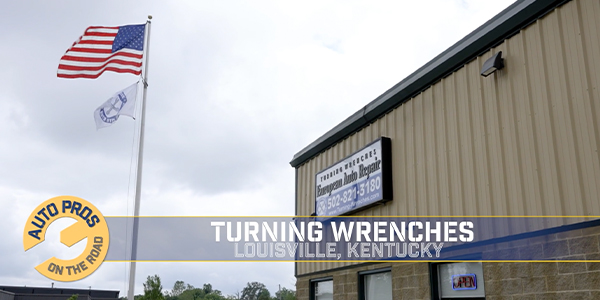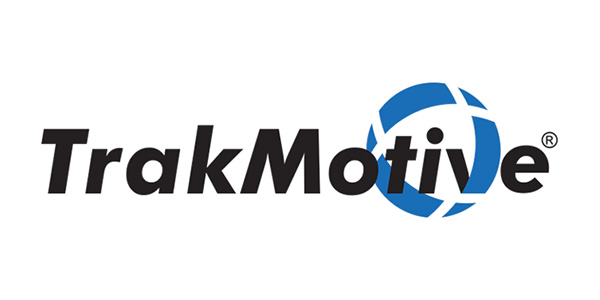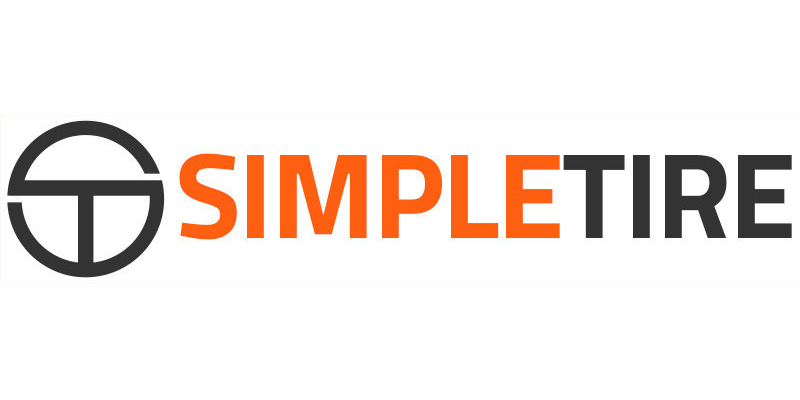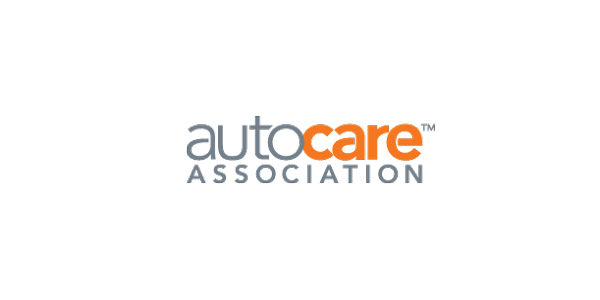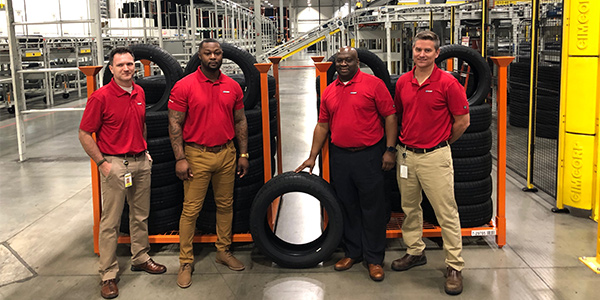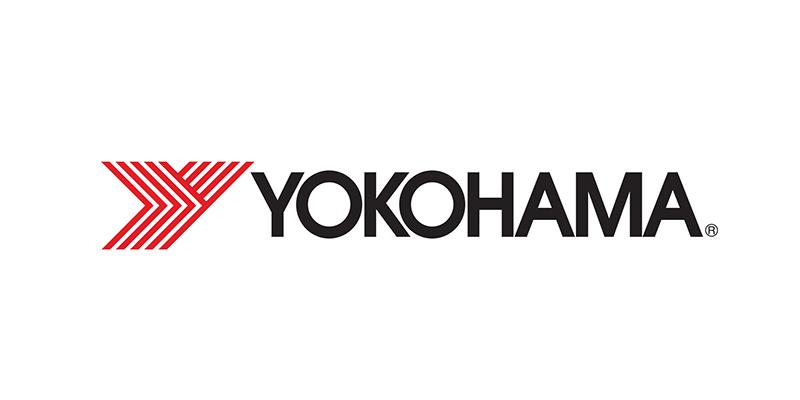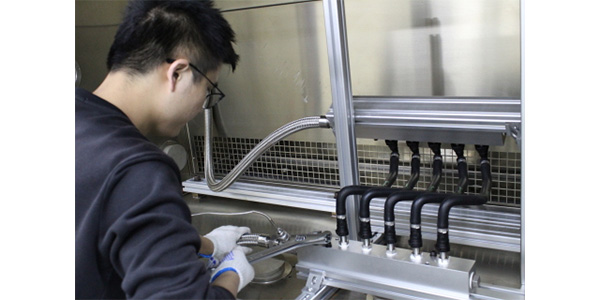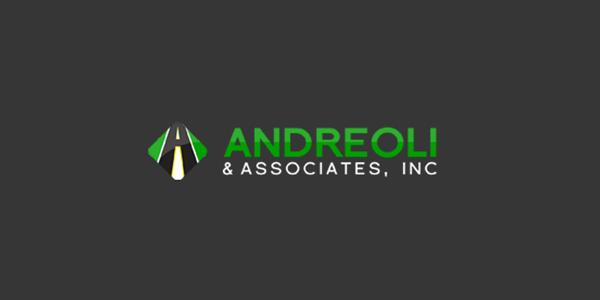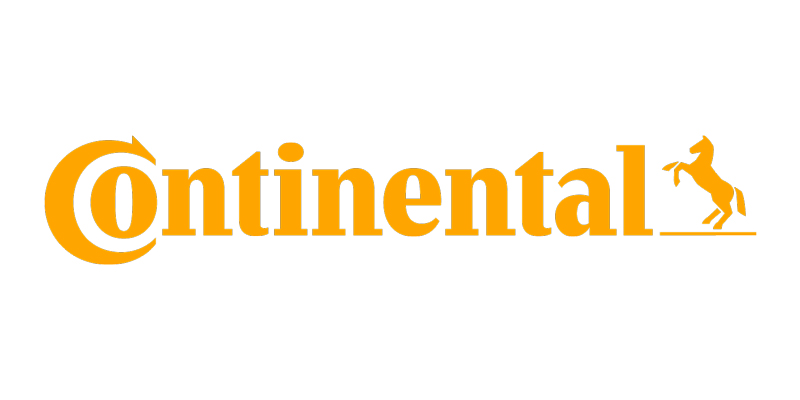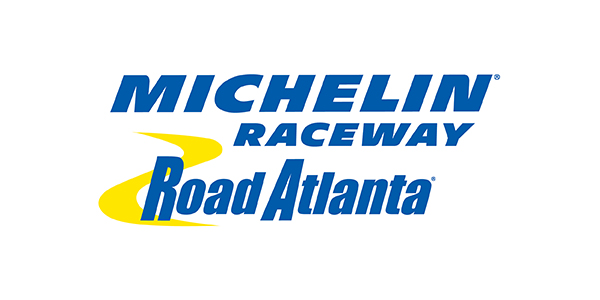In 1972, No Name Tire Store opened its doors in small-town Alliance, Ohio. Owned by Terry Tolerton, the business changed its name to Terry’s Tire Town thanks to an advertising contest. And what started as a five-bay front in a town wedged between Akron and Canton grew to seven stores and a burgeoning wholesale business with warehouses in Alliance, Richmond, Va., and Baltimore. Along the way, Terry’s Tire Town became a cornerstone member distributor for the American Car Care Centers national marketing group. Today, Terry’s Tire Town consists of 12 distribution centers spanning a 12-state service area from northeast Ohio to the mid-Atlantic and north through New England. Tire Review sat down with president and CEO Will Tolerton for an inside look at the last 18 months, and his views on the future landscape for independent distribution.
Over the past two years, Terry’s Tire Town has transformed dramatically, adding a new equity partner in Columbus-based Talisman Capital Partners in early 2011, selling off its seven retail stores to Monro Muffler Brake in mid-2011, and then buying two fellow regional distributors: Summit Tire of New England (February 2011) and Lyndhurst, N.J.-based Englewood Tire Wholesale (December 2011).
With all of the programs and dealer-driven opportunities, what role does a wholesale distributor play in today’s market?
“I see the distributor’s role in the industry growing dramatically in the future as the proliferation of products continues and as mass merchants and national retailers, which have a hard time stocking everything they need day to day, are using distributors more and more. We define a distributor as an aggregator of demand and supplier of services.”
What kinds of services?
“Obviously tires first. As an aggregator of demand, the more brands we have the better. We feel it’s extremely important to have all three of the top brands – Goodyear, Michelin and Bridgestone – and be strong with many of the other brands. The more of these brands that we have, the more we can deliver that customer and move toward that ‘prime vendor’ relationship where we have a large share of each of our key dealers’ businesses. We call it Tire 101 – having the right tire, having it priced correctly and being able to load and deliver it properly. All of those things are important, and if we can’t perform those simple functions it’s very hard to succeed. Then you get into the other services: helping customers with sell-out programs, helping them with point-of-sale software, building websites and helping them with training – things that are hard for an independent tire dealer to do for themselves. We feel it is extremely important for us to bring those services.”
Some of the things you are describing sound like things marketing groups bring to the table. Do you see independent distribution becoming de facto marketing groups for their customers?
“Yeah. Right now in our geography we have the ACCC and the Eco Express program, which is part of ACCC. And ACCC is a big part of our success and they will be an integral part of our program going forward. But we also recognize that we might not always be growing in areas where there is ACCC. In those cases, I do believe that we will be a de facto marketing organization. We already are. We don’t have another brand name beyond ACCC and Eco Express, but we do have marketing people on the street helping our dealers tailor-make individual advertising and promotion programs and other things, basically providing a lot of those marketing group services that can help them maintain their independence.”
Do you feel the one-to-one relationship between the distributor and their direct retail customer will be less about supplying tires and more about all of those other needs?
“I do believe it will evolve to where we will have to separate ourselves from the competition by providing more services and everything we can to help them make it. We want to be the easiest to do business with, the easiest to transact with. That is every bit as important as programs. If everything else is equal, then additional help with sell-out programs and marketing programs and all of those things are very important to dealers.”
Are you seeing mass merchants and retail chains needing the assistance of independent distributors?
“It’s something we’re seeing. We are supplying Monro quite a few tires. Some of that was part of our sale agreement for our retail stores. We’re seeing that with tire manufacturers the cost of doing business with smaller dealers and single stores is escalating. And we’re seeing where secondary supply will be a larger part of the mix, where distributors deliver products to direct customers but the customer gets billed from the manufacturer. I see that as a growing part of the business in the future.”
Is some of that a way to reduce transportation costs for the manufacturers?
“Yes, well, reducing transportation costs and increasing availability of products to their retail points of sale.”
Talk a little about the addition of an equity partner in Talisman Capital.
“When I started evaluating things strategically starting back in 2009, there was only one consolidator in the market, so we looked at it, frankly, thinking that we either needed to grow or be consolidated. With the resources we had we could have done one purchase. We could have done the Summit Tire acquisition, for instance, and then sat back and integrated that over a two-year period. Then we might have been in a position to do something else later. John Boyle, the president and CEO of Englewood Tire, and Ben Kravitz, the president of Summit Tire, are very good friends of mine. We were all on the ACCC board. In 2010, I started to feel that very likely they were both looking for an exit strategy.
“Right about that same time I had begun to look at the private equity world and what it would look like for us. We met with some strong, very well-run equity groups, but the one that stood above all the rest was Talisman Capital Partners because of the expertise of Bob Walter, who is the CEO of Cardinal Health, and Brendan Ford, who worked with him at Cardinal Health for a few years. These guys built the largest wholesale distribution company of any kind in any industry in Cardinal Health and they did that primarily through acquisition. I could not have imagined a better partnership, and a year later all that’s happened is that decision has proven to be correct. They have been a great group to work with, very insightful. They helped us figure out what we need to do from an organizational structure and their experience has provided us with direction.”
How did the deal for Summit Tire come together?
“At the beginning of 2010, I started making a few calls to some other distributors, and on the first call Ben said he wasn’t interested but told me he’d call if he ever was. Well, then in April-May of that year, he mentioned that he was interested in talking about an exit strategy. We actually had a letter of intent on Summit Tire before we had the Talisman Capital deal done.
Was that a chicken-egg situation where the Summit Tire opportunity created the desire to hook up with Talisman Capital?
“Well, the Summit Tire and Englewood Tire deals together did somewhat precipitate the Talisman deal, because as of August of 2010, we had a handshake deal with John Boyle of Englewood Tire, as well as with Summit. And we completed bringing Talisman in as an equity partner on Nov. 23, 2010. So all of these balls were in motion literally at one time. I was working on selling our retail stores and we were also working on moving forward and closing the Summit and Englewood acquisitions. And we were dead set. We were going to get the Summit Tire acquisition done even if something went awry with the Talisman transaction. We were dead set on completing the Summit Tire acquisition.
“The Englewood Tire deal was completed and closed on Nov. 30. There were some rumors in the marketplace about that, but the deal wasn’t finalized until then. John did have to put a letter out because of those rumors, and he made an announcement to employees and customers prior to closing.”
What are some of the factors that come into play in dynamics that are creating the need for exit strategies?
“I guess the most common is that if you look at the market, there is a tremendous number of people who started businesses in the 1970s. I think the number one driving force is the lack of a succession plan, and dealers reach that age when they desire retirement. I do think there are people out there who are concerned about the growth of major competition. When you look at TCI’s growth strategy and all of the distribution centers it has opened over the last 10 years, and look at how ATD has grown and its plans to open even more distribution centers, I think a lot of people look at those as threats and they just don’t have the desire to battle. I think any strong distributor servicing their customers the right way has the opportunity to thrive, but it is a very challenging environment out there right now. No doubt about that. I think the infusion in private equity into the industry – ATD has been private equity-owned for years and I have tremendous respect for them – means there are aggressive growth strategies. It’s different with us in that we are still family-owned and operated by the Tolerton, Boyle and Walter families. And so there is not some type of pressure to turn a profit or get EBITA to X and then flip the company in three to five years. We’re not operating in that same framework.”
What have those two acquisitions meant to Terry’s Tire Town?
“Well, obviously the growth. They have given us a larger footprint, and they have put us in a very secure position to steer our future. If we did nothing but build on the infrastructure of Terry’s and Englewood and Summit and continued to just organically grow at the rates the three companies have historically grown, we’d become a pretty major regional player in our own right. If that was all we did – but that’s not all we plan to do. A lot of our focus for 2012 will be on integrating the three companies and determining best practices moving forward. These are great companies, built on decades of great leadership and we’re thrilled to have John stay on as executive vice president and a member of our board of directors. He will help maintain key customer and supply relationships, and help steer overall corporate direction and strategy.
“One of the exciting aspects of these acquisitions is watching our people grow as we grow. Like Mark Lindsey, our vice president of sales, who has done a phenomenal job. He’s on the road all of the time working with customers, and he’s been working with the folks at Englewood and Summit to integrate sales operations. And we’ve added tremendous staff here in Alliance, which isn’t exactly a thriving metropolis by any means. But it’s exciting to see all of the great people we have found in this area, and we have been adding people to fill out all of the infrastructure.”
Are the Summit and Englewood operations going to change their names to Terry’s Tire Town?
“For the foreseeable future, they will operate as Terry’s Tire Town: Summit Tire Wholesalers or Terry’s Tire Town: Englewood Tire Wholesalers. Now here’s a news flash: we are in the process of coming up with a new name – a new overall name for the entire company. Over time we will transition to just that name. As much as I love the name ‘Terry’s Tire Town,’ that was the name of a retail store that my dad opened in 1972. As much as I love that name and our history – and they are important – the name ‘Terry’s Tire Town’ still sounds like a five-bay, family-owned retail store. I don’t think anyone here will forget where we came from.”
Is your plan to remain as a regional distributor? Or how big does that “region” get for you?
“I’d say that region gets as big as our organization can handle. One of the things about partnering with Talisman Capital is that we don’t have overly grandiose plans. Our objective is to grow methodically, responsibly and with the customer in mind. The most important thing to us is providing a high level of service to our customers, and, of course, shareholder return. We would probably be perfectly satisfied if we were a super regional distributor doing a fantastic job being a great distributor for the tire manufacturers and the customers we serve and giving our employees an opportunity to grow. If we do everything right and we build the right organization and have the right people, who knows what will happen. We will most likely grow to something larger than a super regional distributor, but who knows. There are no specific plans on where and how.”
So 2012 will be a pretty quiet year as far as growth is concerned?
“I don’t think anyone here thinks it’s quiet right now. Trust me, the accounting department and our CFO are hoping we slow down a little so they can get things organized and integrated. There will probably be some growth plans in 2012. But the biggest focus is on building our infrastructure.”
Going forward, will it be growth by acquisition or organic growth?
“It’ll probably be a combination, a little bit of both.” (Shortly after this interview was conducted, Terry’s Tire Town opened a new 135,000-square-foot distribution center in East Taunton, Mass.)
Are you looking to grow with some geographic connection so that your coverage is contiguous? Do you see a point when you expand into the west?
“Most likely not, but opportunities could present themselves. Sometimes when opportunity knocks, you have to be in a position to take advantage. In an ideal world, in a perfect world, we would continue to grow contiguously.”
Do you see other distributors like yourself becoming bigger, stronger regional players?
“Absolutely. There are a lot of great companies that continue to grow and will probably remain strong regional players for years to come. Distributors like S&S Tire, USAutoforce and K&M Tire are all working hard to grow. What makes it hard is that we have a lot of friends in the industry and we want to maintain those friendships, so not going into each other’s backyards does limit some of the potential growth opportunities.
“If the contest is about having the most distribution centers in the U.S., then I don’t think we’re going to compete in that. Our major objective is to bring a high level of service to our customers and support the manufacturers, our shareholders and our employees. Obviously the industry is changing and that might end up being a model. American Tire Distributors is at some 100 distribution centers. I believe Cardinal Health serves the whole U.S. with 12 distribution centers. Lot of trucks, though, but you get the idea.”
Legitimately, how many companies would or could be strong regional distributors?
“I don’t know. Five, six, maybe 10 on the high side. I’m looking at someone operating at least three warehouses and carrying major brands. Sometimes, moving forward, the manufacturers are somewhat of a hindrance to growth at times because of not giving everybody every brand everywhere they go. One of the main reasons I feel independent distributors will succeed is that independent retailers continue to succeed and maintain a high share of market.”
By our count, ACCC has just 13 member distributors. Is that good or bad for ACCC?
“I don’t think it changes anything. When you look at what we have done, I think it’s good for ACCC. We have taken three of the strongest participating members in terms of purchases and leveraging the marketing programs and supporting ACCC and married them. We’re 100% committed to ACCC, so you’re taking a large region – like 12 states for ACCC – and what you will see is a high level of consistency throughout that part of the country. We’re going to be taking best practices from all three and bringing that to ACCC member dealers. All three organizations ran very strong ACCC programs. If you take the best of the best from those three, you will see a very consistent, excellent program. Len Lewin and his ACCC team provide us with all of the tools, but it’s up to us as member distributors to use those tools to help our customers.”
You sold off your retail stores last year to concentrate on the wholesale business. Do you see other dealers with both retail and wholesale businesses selling off one in favor of the other?
“I’d love to see some of them go one way and sell me their wholesale businesses and create a supply agreement for their retail stores. That would be something I’d love to have the opportunity to talk about (Laughing). But it seems to me more and more that these larger regional retailers, because of the proliferation of product, are servicing their stores out of central warehouses instead of having the manufacturer ship them piecemeal. That’s because sometimes the manufacturer’s shipping policy to a small retailer is just so prohibitive. They order the tire Monday and don’t get it until Friday. To me that makes it difficult to compete and to service your customers.”
You’re still a pretty young guy. So what is your succession plan?
“My succession plan? I haven’t ever really thought much about that. I’m having a great time. I love what I do. I love the business, and that has a lot to do with what we have done. I grew up in this business. I started changing tires when I was in high school. I worked in the warehouse, and I started selling tires when I was in college. I’m a tire guy and grew up in this business, and then I partnered with private equity to provide the resources necessary to continue to grow into the future and compete in today’s environment. I’m going to do this as long as I feel I’m the best CEO for the company. I’m having fun and feeling like I’m providing value to the company.
“I think our strategy brings balance, maintains choices for independent tire retailers and provides a balance to tiremakers. We are building a structure that can withstand and create opportunities for people here to grow. If my sons want to come into the business, I would love to have them, but their last name doesn’t guarantee them an executive position. Yes, I am second generation and I came into a small organization and was integral to helping the business grow. I think it is a fallacy that your last name automatically makes you the best person to manage. They will have to start at the bottom like I did and learn the business from the ground up.”
Is there a point that a company gets too big and stops delivering value to its customers and loses something in that relationship? Is that something that you think about moving forward?
“Oh sure. That’s a critical issue for us. As we make new hires I think protecting our culture is the most important thing. You have to have the right skill set for the job, but the cultural fit is absolutely everything. To answer your original question, though, yes, a company can get too big and get too caught up and become too bureaucratic, too sterile, too concerned about nothing more than the bottom line and shareholder value. If Terry’s Tire Town ever became that under my watch, then it would be time to step down. It is not at all the kind of company that I want to build. I want a company that treats its people with a small company feel. If our customers came back to us with comments like ‘You’ve gotten too big’ or ‘You have gotten too far from the customer,’ it would be a big concern.”

